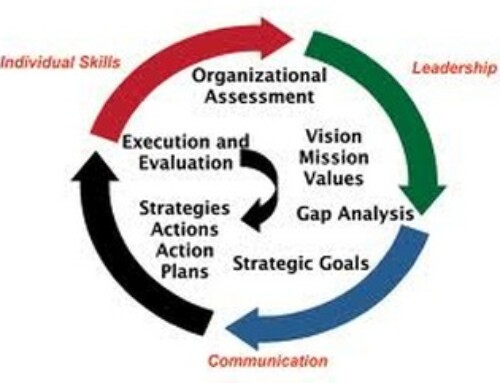AT&T announced a new program today to encourage better collaboration for building new generation mobile and wired broadband application. There could be interesting opportunities for the real estate industry to become part of building and deploying leading edge mobile technologies for real estate consumers.
AT&T Announces Plans to Open Innovation Centers to Spur Development of New-Generation Mobile and Wired Broadband Applications, Devices Facilities to Support AT&T LTE Trials and Testing Beginning Later this Year
AT&T Inc.* today announced plans to establish AT&T Innovation Centers to drive development of next-generation devices, applications and equipment that expand the capabilities of mobile and wired broadband. Plans call for AT&T Innovation Centers to be opened in at least three locations later this year, including two locations in the U.S. and one international facility.
The centers will be designed to enable AT&T scientists and engineers to work directly with device makers, application developers and network equipment providers to expedite development of an ecosystem of mobile and wired broadband services and capabilities for consumers and business users. Third-party developers will have access to a full range of AT&T services and network capabilities to facilitate development of new applications. “Collaborative innovation is at the heart of broadband today, and it will be even more critical in the years to come as we work to ensure that customers get the most out of mobile broadband platforms like LTE and service platforms like U-verse IPTV,” said John Donovan, AT&T’s chief technology officer. “We envision these AT&T Innovation Centers as a crossroads for the industry to drive new capabilities crossing networks, devices and applications. They will provide an opportunity for AT&T experts to work directly with others in the industry to develop, evaluate and perfect new apps and services as broadband networks continue to evolve in the years to come.”
The facilities will complement AT&T’s strategy to continually enhance and expand mobile broadband capabilities over the next several years. In 2010 and 2011, AT&T will work to further increase speeds on the nation’s fastest 3G network by deploying fiber-optic backhaul connections and HSPA 7.2 technology. With 10 HSPA 7.2-compatible devices available today, millions of AT&T customers will be able to immediately take advantage of faster 3G speeds as expanded backhaul is deployed in markets. At the same time, AT&T this year plans to begin field trials of LTE, the next generation of the existing GSM/UMTS mobile broadband technology platform that powers the AT&T 3G network today. LTE technology promises to deliver higher mobile broadband throughput and lower latency than today’s 3G networks, helping to drive continued growth of powerful mobile applications and advanced devices. With commercial deployment of LTE scheduled to begin in 2011, AT&T’s time line aligns with industry expectations for development of the technology and widespread availability of equipment and compatible LTE mobile devices. Leading LTE equipment providers Alcatel-Lucent and Ericsson plan to participate in the
AT&T Innovation Centers, expanding on the recently announced agreements designating the two companies as AT&T’s LTE Radio Access Network equipment providers. Each of the AT&T Innovation Centers will include dedicated facilities and staffing focused on application and service development, prototyping, equipment testing and demonstration of emerging capabilities. The centers will focus on enabling integrated mobile and wired broadband capabilities crossing multiple device “screens,” including smartphones and other mobile devices, PCs, televisions and other emerging devices. Additional details on the facilities’ locations and staffing will be announced later this year. The evolution to LTE is part of AT&T’s ongoing efforts to innovate and invest in mobile broadband. AT&T today serves twice the number of smartphone customers as its nearest competitor, and this smartphone leadership has resulted in mobile broadband traffic that has grown more than 5,000 percent over the past three years. Smartphones are just one example of innovation made possible by investment in mobile broadband. AT&T in January announced total 2010 capital expenditures are expected to be between $18 billion and $19 billion companywide.
These plans include an increase of approximately $2 billion in wireless network and backhaul investment, which will help ensure continued strong results in 3G network performance as well as preparation for planned deployment of LTE. This level of investment is framed by the expectation that regulatory and legislative decisions relating to the telecom sector will continue to be sensitive to investment. AT&T wireless network investment plans for 2010 also include construction of about 2,000 new cell sites and adding new radio controllers and carriers at a pace that doubles deployment in 2009. In addition to mobile broadband, the centers will also facilitate collaboration and development for wired broadband and the AT&T U-verse IPTV platform.
AT&T is the only major service provider in the nation offering a 100-percent IP-based TV service, which provides numerous advantages over older, cable-based technologies, including the ability to integrate services and adapt to consumer demands. Because all of these services speak the same “language” with IP, AT&T is well-positioned to integrate applications over TV, broadband, home phone and wireless. *AT&T products and services are provided or offered by subsidiaries and affiliates of AT&T Inc. under the AT&T brand and not by AT&T Inc.




